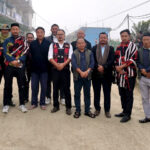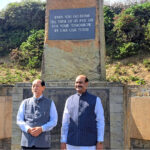I remember introducing myself as someone from the Northeast to some classmates while pursuing my Bachelor’s in Delhi. They looked at me with suspicion and claimed that I could not be from the Northeast, because according to them, people from the Northeast look different. I returned home that night and began to question myself—what made them think so? At the same time, I recalled studying in Bangalore, where I faced a similar situation. My roommates in the hostel had asked me if I was a member of Assam’s insurgent group, ULFA. I felt very uncomfortable with my identity the moment I faced such questions, especially from students of prestigious universities in India. It was then that I realized how misinformation had shaped such negative narratives about the Northeast across other parts of the country. I never expected such questions from students of these educational institutions.
Later, I realized that it’s not just the education system that perpetuates this, but the social system is also a victim of this narrative. Since childhood, I was taught that India is known for its unity in diversity. This concept, however, seems to first emphasize cultural divisions and then urge people to stay united. On the other hand, it became clear to me that while foreign forces may have physically left India, they have left behind a habit—to think through a European perspective, even after independence. After traveling across India, I have realized that the diversity we often talk about is not so much cultural but more about differences in colonial experiences.
The colonial narrative didn’t develop overnight; it took years to change the mindset of Indian society. It is crucial to understand the process of narrative building and explore the pre-colonial social systems to grasp reality.
Colonial forces may no longer physically occupy land, but they continue to control minds. This is the modern method of colonization. Various channels like media, art, and literature are used, directly or indirectly, as carriers of this narrative. Additionally, when any force arrives, it brings with it a range of elements, and we can observe their influence all around us.
As an Assamese, I do not see much difference between regional and national issues because the driving forces behind these issues are the same. If we analyze the patterns of activity across different regions of India, we can observe a divisive narrative at work everywhere. Personally, I am tired of unsubstantiated theories like the Aryan invasion theory, which attempts to classify people as Aryan, Dravidian, or Mongoloid. Modern DNA research has completely debunked these theories as well. When we look at the cultural continuum of this land, we do not find major diversities; rather, we find remarkable similarities.
It is important to remember that before the British arrived, India had one of the highest GDPs in the world, even more than all of Europe combined. By the time Britain left in 1947, India’s GDP had dropped to less than 2%. I began this article by recounting my encounters with these issues during my college days, but I believe I am not alone in this experience. It is important to note that these narratives require institutions to survive and spread within society. Education has been weaponized as the best tool to control the minds and markets of India.
If we visit some of the remotest villages of the Northeast, we can still find people who are more aware of India’s cultural continuity than many university scholars. The knowledge passed down orally from indigenous people in the Northeast might not have written documentation, but it is preserved through folk tales, stories, and traditions. We must not forget that our civilization has survived largely through oral culture. Nowadays, we use social media to share our ideas and interests, which is a result of media socialization. However, when minds are controlled by external forces, these narratives spread faster than ever before.
In conclusion, the narratives surrounding the Northeast of India reveal a profound interplay between identity, misinformation, and colonial legacies. While the education system and societal norms have perpetuated misconceptions, the voices of indigenous communities offer invaluable insights into our shared history. By embracing these perspectives and challenging divisive narratives, we can work towards a more inclusive understanding of India’s rich tapestry.
Neptune Barman is pursuing MA in English at Sathyabama Institute of Science and Technology Nalbari, Assam



